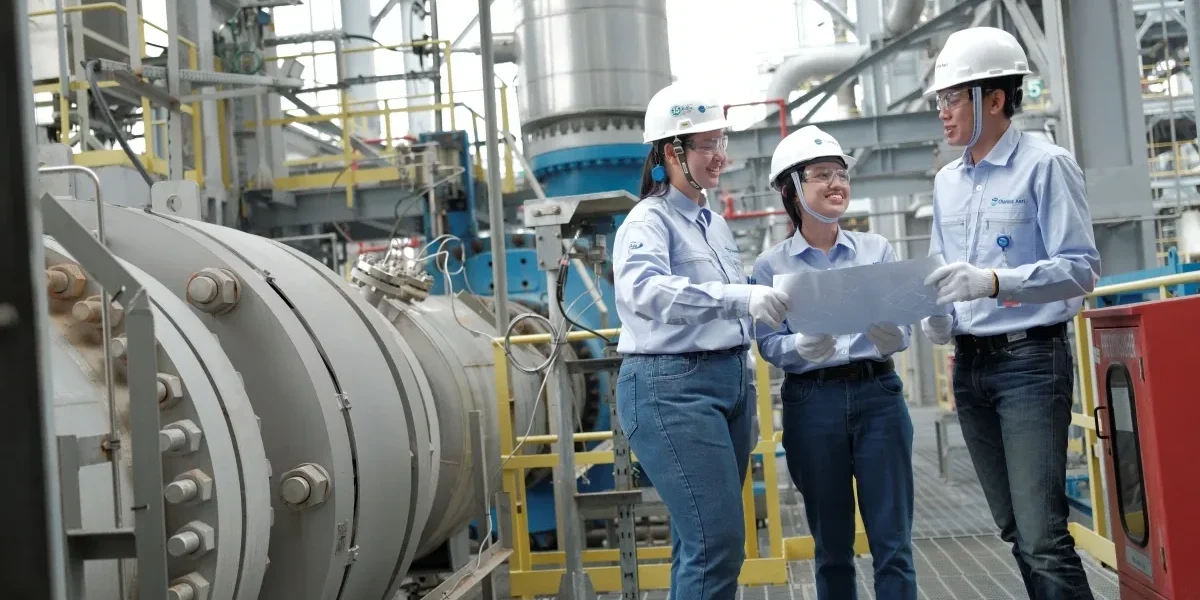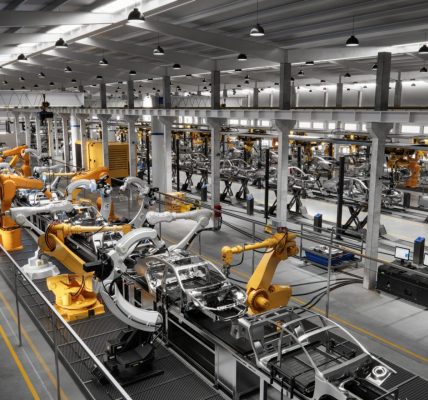In the modern economy, the term industry refers to a collection of companies, organizations, and activities that produce goods or provide services within a specific sector. Industries form the backbone of economic growth, employment, and technological innovation. Understanding how industries function, adapt, and compete is crucial for policymakers, business leaders, investors, and professionals.
What is an Industry?
An industry encompasses all economic activities related to producing, distributing, and selling specific types of goods or services. It is often categorized into sectors based on common characteristics, technologies, or target markets. Industries can be traditional, such as agriculture and manufacturing, or modern, like information technology and biotechnology.
Industries contribute significantly to a country’s GDP, shape labor markets, and influence global trade patterns. The performance of an industry often reflects broader economic trends and consumer behavior shifts.
Classification of Industries
Industries are commonly classified based on production methods, economic impact, and market scope. Understanding these classifications provides insights into operational strategies and investment opportunities.
Primary Industry
Primary industries focus on extracting and harvesting natural resources. This includes:
- Agriculture: Producing crops, livestock, and dairy
- Mining: Extracting minerals, metals, and fossil fuels
- Forestry: Harvesting timber and related products
- Fishing: Providing seafood for consumption
Primary industries are crucial for supplying raw materials to secondary industries. They are highly dependent on natural resources and environmental conditions.
Secondary Industry
Secondary industries transform raw materials from primary industries into finished goods. Examples include:
- Manufacturing: Automobiles, electronics, textiles
- Construction: Buildings, bridges, and infrastructure projects
- Energy Production: Refined fuels, electricity, and alternative energy
Secondary industries drive industrialization and urbanization. They often require substantial capital investment, skilled labor, and technological innovation to remain competitive.
Tertiary Industry
Tertiary industries provide services rather than tangible goods. This sector has expanded rapidly with the growth of digital economies and consumer demand. Examples include:
- Retail and e-commerce
- Financial services, banking, and insurance
- Healthcare and education
- Hospitality, travel, and tourism
Tertiary industries are heavily dependent on customer experience, technology adoption, and service quality.
Quaternary and Quinary Industry
The quaternary sector focuses on knowledge-based services such as research, IT, and consulting. The quinary sector emphasizes high-level decision-making and advanced services, including healthcare management, scientific research, and government planning. These sectors are increasingly important in innovation-driven economies.
Key Components of an Industry
Successful industries rely on several interconnected components that ensure competitiveness, innovation, and sustainability.
Market Structure
The structure of an industry determines competitive dynamics, pricing strategies, and market behavior. Common market structures include:
- Perfect Competition: Many small firms producing identical products
- Monopolistic Competition: Multiple firms offering differentiated products
- Oligopoly: A few dominant firms controlling a significant market share
- Monopoly: Single-firm dominance with pricing power
Understanding market structure helps companies develop strategic positioning and anticipate competitive challenges.
Supply Chain and Operations
An efficient supply chain is critical for industrial success. Industries integrate suppliers, manufacturers, distributors, and retailers to ensure timely delivery, quality control, and cost optimization. Advanced industries leverage:
- Automation and robotics for manufacturing efficiency
- Just-in-time inventory systems to reduce waste
- Data analytics for supply chain optimization
- Sustainability practices to minimize environmental impact
Technology and Innovation
Innovation drives industry growth and competitiveness. Modern industries adopt advanced technologies, such as:
- Artificial intelligence for predictive analytics and process automation
- Internet of Things (IoT) for real-time monitoring of operations
- Advanced materials for durable and sustainable products
- Renewable energy solutions to reduce operational costs
Industries that fail to innovate risk obsolescence in a rapidly evolving market.
Regulatory Environment
Industries operate within legal and regulatory frameworks that ensure safety, compliance, and ethical practices. Regulations can cover:
- Environmental protection and emissions standards
- Labor laws and workplace safety
- Consumer protection and product standards
- Trade tariffs, taxes, and industry-specific guidelines
Compliance is essential to avoid legal consequences and maintain market credibility.
Human Capital
Industries depend on skilled labor to drive operations, innovation, and customer satisfaction. Workforce development includes:
- Continuous training and upskilling programs
- Talent retention strategies to reduce turnover
- Leadership development for decision-making and strategic growth
- Diversity and inclusion practices to foster creativity and collaboration
A strong workforce is often a differentiating factor in competitive industries.
Strategic Approaches in Modern Industries
Industries adopt diverse strategies to remain competitive, grow market share, and respond to changing consumer demands.
Market Penetration and Expansion
Industries increase revenue by capturing more market share within existing segments or expanding into new regions. Tactics include:
- Aggressive marketing campaigns
- Product bundling and promotions
- Geographic diversification to reach untapped markets
Product and Service Innovation
Industries frequently invest in research and development to improve products or introduce new services. Strategies involve:
- Prototype development and pilot testing
- Leveraging customer feedback for continuous improvement
- Collaborating with research institutions or tech startups
Digital Transformation
Modern industries integrate digital tools to streamline operations, enhance efficiency, and improve customer experiences. Key aspects include:
- E-commerce platforms for retail industries
- Cloud computing for scalable operations
- Data-driven decision-making for market forecasting
- Cybersecurity measures to protect sensitive information
Sustainability and Corporate Responsibility
Environmental and social considerations have become central to industrial strategy. Practices include:
- Adopting renewable energy and reducing emissions
- Implementing circular economy models for waste reduction
- Ethical sourcing and supply chain transparency
- Community engagement and social responsibility programs
Industries that prioritize sustainability often gain consumer trust and long-term viability.
Challenges Facing Modern Industries
Operating within a global and competitive environment exposes industries to various challenges:
Technological Disruption
Rapid advancements can render traditional methods obsolete. Industries must continuously invest in innovation to stay competitive.
Global Competition
International markets create pressure for cost efficiency, quality improvement, and customer-centric approaches.
Regulatory and Compliance Burden
Compliance requirements vary across countries and sectors, requiring significant resources to manage effectively.
Resource Scarcity
Industries dependent on raw materials face challenges from depletion, price volatility, and environmental concerns.
Workforce Management
Attracting, training, and retaining skilled talent is increasingly difficult in competitive industries, particularly in emerging technologies.
Industry Trends Shaping the Future
Several trends are redefining industries worldwide:
- Automation and Robotics: Enhancing efficiency and reducing labor dependency
- Artificial Intelligence and Machine Learning: Driving predictive analytics, customer personalization, and operational optimization
- Sustainable Practices: Transitioning to green energy, circular economies, and environmentally friendly production methods
- Globalization and Localization: Balancing international expansion with local market adaptation
- Remote Work Integration: Reshaping workforce management and operational models
Industries that embrace these trends are more likely to thrive and sustain long-term growth.
Real-World Industry Practices
Examining specific examples highlights effective industry practices:
- Automotive Industry: Leveraging electric vehicle technology and automation to improve efficiency and reduce emissions
- Healthcare Industry: Adopting telemedicine, AI diagnostics, and patient-centric care to enhance accessibility and outcomes
- Technology Industry: Emphasizing continuous innovation, agile methodologies, and global collaboration to maintain market leadership
- Renewable Energy Industry: Investing in solar, wind, and sustainable solutions to meet growing energy demand and environmental regulations
Best Practices for Industry Success
- Invest in Research and Development: Continuous innovation ensures long-term competitiveness
- Focus on Customer Needs: Understanding changing consumer behavior drives product and service improvement
- Maintain Operational Efficiency: Streamlined processes reduce costs and enhance productivity
- Adopt Sustainable Practices: Environmental responsibility attracts customers and mitigates regulatory risks
- Prioritize Talent Development: Skilled employees enhance innovation, quality, and growth
- Leverage Technology: Digital tools and automation improve scalability and efficiency
FAQ Section on Industry
Q1: How is an industry different from a sector?
An industry refers to a group of companies producing similar goods or services, while a sector is a broader classification that may include multiple related industries. For example, the technology sector encompasses industries like software development, hardware manufacturing, and IT services.
Q2: Why is innovation critical for industries?
Innovation drives efficiency, product differentiation, and competitiveness. Industries that adopt new technologies, improve processes, and meet evolving consumer needs are better positioned to grow and survive market disruptions.
Q3: How do global trends affect industries?
Global trends such as digital transformation, sustainability, and trade policies influence industry operations, competitiveness, and market strategies. Industries that anticipate and adapt to these trends can seize new opportunities and mitigate risks.
Q4: What role does government regulation play in industries?
Regulation ensures safety, quality, and ethical practices. While compliance can be resource-intensive, it also protects consumers, enhances credibility, and fosters sustainable industry practices.
Q5: How do industries adapt to resource scarcity?
Industries address scarcity by adopting renewable resources, recycling, optimizing supply chains, and investing in alternative materials. Sustainability initiatives are increasingly essential for long-term viability.
Q6: What are the challenges of workforce management in modern industries?
Industries must attract, train, and retain talent while adapting to remote work, automation, and changing skill requirements. Effective workforce strategies enhance productivity, innovation, and employee satisfaction.








